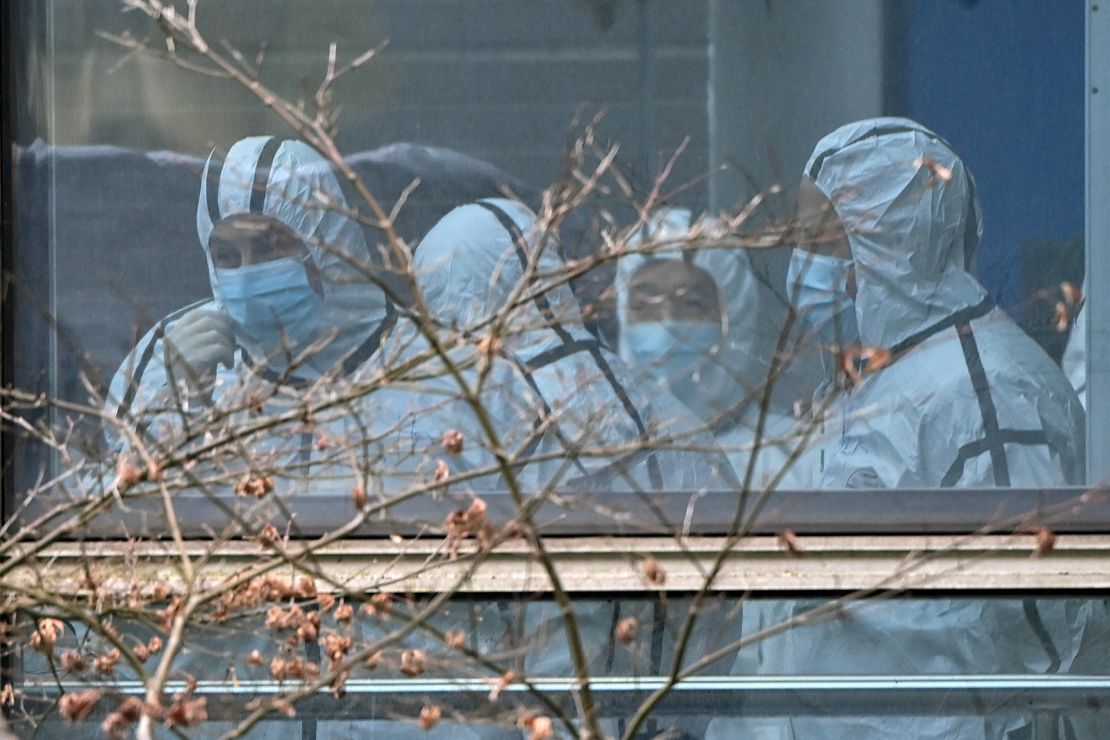Why does the theory that SARS-CoV-2, the virus that causes Covid-19, leaked from a laboratory in China endure so persistently?
Above all, it isn’t because public, hard, tested evidence is growing at pace.
The theory instead seems to persist mostly because of several massive coincidences.
Firstly, Wuhan, where the disease almost certainly began in China, is home to China’s major biosafety level 4 laboratory, the Wuhan Institute of Virology (WIV). It, and two other laboratories in Wuhan, were doing research on coronaviruses, some of it in bats. The WIV sequenced the genetic code of the closest-known ancestor in bats to SARS-CoV-2, a virus called RatG13. It is 96.2% of the way identical to the novel coronavirus that caused the pandemic. One of the WIV’s leading researchers, Shi Zhengli, is called the “Bat Lady.”
Secondly, three of the WIV’s staff fell ill in November 2019, just before the known outbreak started, US intelligence reporting has said. They needed hospitalization, the reporting said. (But we don’t know for what disease. We also don’t have access to any samples taken from them when they were ill, or the results of any SARS-CoV-2 antibody tests after they were ill.) The World Health Organization (WHO) report into this issue, relying on Chinese government-supplied data, presented a different conclusion. It said the staff health monitoring program at the three laboratories in Wuhan showed no antibody test positives, or records of Covid-19-type illnesses, in the weeks prior to December 2019.

Finally, there’s a third coincidence. The Wuhan Center for Disease Control and Prevention, key to virus prevention and detection, moved its laboratory in Wuhan on December 2, 2019. The WHO report, written in conjunction with Chinese officials, notes this fact and says it could have been disruptive to a laboratory’s operations. It also notes the lab moved to a location near the Huanan Seafood Market, the exotic animal trade center thought to have played a major role in the virus’ early spread. The move happened just six days before the first patient experienced Covid-19 symptoms, according to China’s account. (He is, the WHO report said, an accountant working for a family company, with no known history of attending crowded events, animal “wet market” contact, or exotic trips to the wilderness. These facts suggest he may have got it in the city, perhaps from another person).
These three pretty huge coincidences foster the lab-leak theory, and mean it has not yet gone away. Western intelligence officials CNN has spoken to say they cannot “disprove” the idea – or prove it. These coincidences are perhaps why it sits in this hinterland – never permanently debunked, never proven. Their solution is like “Occam’s razor” – the idea that the simplest explanation is the most likely.
But none of it is solid or even compelling evidence that a lab leak occurred. That evidence may exist, and be super-classified within the government that possesses it. But as it is not public, we can’t presume it exists to confirm a bias that China is hiding something terrible.
But the likelihood China is hiding something is of no help either. (Even the WHO team, whose report Chinese officials helped author, admits they would like access to more material and better information – to hospital blood bank samples from the time of the outbreak, and to raw data across Hubei about possible cases in October and November. Despite making that clear months ago, they have yet to receive it).
So what about the other main theory: that the disease emerged from animals, and was transmitted to humans in a natural process?
This “spillover idea” is messier, and also hard to definitively prove. The WHO investigators share the conclusion of most specialists in this field: that the disease most likely came from bats, via another species, known as an “intermediary animal,” and then infected humans.
Why bats? One theory is that because they flap their wings very fast to fly, they have a high average body temperature. When we humans get a virus, we get a fever, which is the body raising our temperature slightly to kill the intruder. Viruses in bats learn to deal with a higher temperature as standard. So if they cross into humans, our basic defense of raising our temperature doesn’t work. It also means bats are a reservoir of robust viruses that have learned to survive.
Some scientists think it’s possible SARS-CoV-2 could have crossed from bats straight into humans. Most experts – and the WHO report – conclude it went via an “intermediary animal,” another species that was infected before passing the virus on to humans.
It is in this “intermediary animal” where things could have got even more complicated. The closest bat virus we know of to the novel coronavirus in humans is the RatG13 virus, which the WIV found. Scientists think one way it could have become SARS-CoV-2 is through a “recombination event.”
This is where a virus takes something from another virus it meets: a bit like fitting better wheels to a car. It can improve the virus’s effectiveness. Finding out where and when this happened is a task of nightmarish complexity. China was regularly screening 69 types of animal looking for rare viruses, it told WHO, during 2019 and likely before. Any one of them – or many other species not tested – could have been the place where a recombination event formed SARS-CoV-2.
The Lab Leak theory has a spin-off conspiracy here. It suggests the RatG13 virus could have been turned into SARS-CoV-2 through deliberate human manipulation, called “gain of function” research. Scientists do this by altering viruses in a laboratory, to learn more about how viruses infect and impact humans. It can be dangerous, and was put on pause in the US briefly under the Obama administration. Some scientists say attributing virus changes to “gain of function” research is an easy explanation often misused to explain any change in a virus that could have occurred through natural, complex processes. These scientists discount its role in forming SARS-CoV-2.

The final step in the animal theory, called “zoonotic transfer,” involves the infected animal coming into contact with Patient Zero – the first human known to be infected. Suspicion has been pointed to China’s sprawling, unregulated exotic wildlife trade. Some lurid examples of animal trading were photographed at the Huanan Seafood market, which has regular been associated with the outbreak of the virus. The WHO report concluded, however, that many of the known first human cases in Wuhan had no contact with Huanan at all.
Tracing the virus back to the animal where it was first created is extremely hard in an open, permissive environment. It is harder still in China, where a plethora of useful data has not been handed over to the WHO team by the Chinese government.
These issues all complicate the 90-day intelligence review that US President Joe Biden has ordered. On one side of the argument is a ton of circumstantial evidence and coincidence pointing to a lab leak. (US investigators will need hard evidence a leak occurred, and to assess if China even knew it had taken place). On the other side of the argument, supporting the virus’ transfer or spillover in nature, is the vast preponderance of scientific research on the subject to date. Yet it too is infuriatingly inconclusive.
Amid all the blame, counter-accusations, suspicions and cover-ups, one problem remains for us humans as a species. We really need to know how and why this virus came to be, so we can stop it from happening again.






